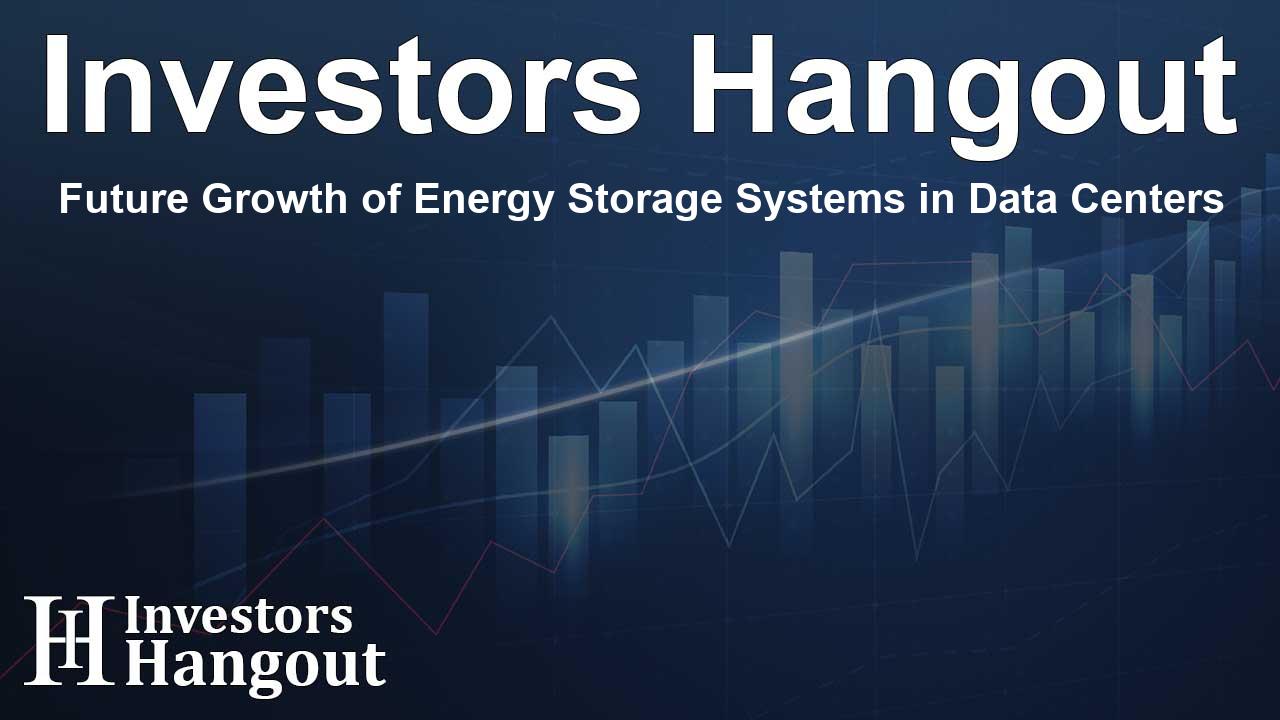Future Growth of Energy Storage Systems in Data Centers

Forecasting the Rise of Energy Storage in Data Centers
Key drivers for ESS adoption include the need for IT system resilience and operational cost management.
A recent report analyzes the energy storage systems (ESS) market in data centers, emphasizing growth and technological advancements shaping the sector.
Energy storage systems have become an essential component in data center operations, primarily driven by a strong demand for resilience and reliability. Currently, short-duration uninterruptible power supplies (UPS) are widely used, but there is a growing trend towards larger-scale, long-duration ESS solutions. Companies focused on meeting strict energy goals are particularly interested in these advancements.
This growth trajectory for UPS capacity is remarkable. Projections indicate that yearly UPS capacity additions will rise from 7.7 gigawatts (GW) in the near future to approximately 29.5 GW by 2034, showcasing a compound annual growth rate (CAGR) of around 16.1%.
Challenges and Considerations
As stated by research analysts, the rapid expansion of global data center projects is expected to drive concurrent growth in the UPS market. However, several constraints affect the adoption of large-scale ESS, such as financial feasibility, physical limitations, and evolving policy frameworks.
Some key barriers to widespread ESS deployment include high capital expenditures, uncertain regulatory environments, and the challenges of integrating these systems with existing grid structures. As these factors continue to evolve, operators face ongoing challenges in ensuring safe and efficient long-duration energy storage (LDES) solutions.
Determining Drivers for ESS Adoption
Numerous factors are propelling the adoption of energy storage solutions in data management facilities. Central among them is the drive for IT system resilience, which is highlighted by the widespread implementation of UPS systems. Additionally, businesses are increasingly motivated by the desire to reduce carbon emissions and enhance the integration of renewable energy sources.
Financial considerations further incentivize operators to explore ESS options. Strategies such as peak shaving and load shifting can effectively manage operational costs while allowing participation in grid service markets. Nevertheless, the landscape presents hurdles, particularly with LDES, where policy uncertainties and high initial costs continue to raise concerns among potential users.
Energy Storage Systems and Market Projections
The shift towards energy-efficient systems is expected to transform data center infrastructure over the next decade. Projections suggest ESS technologies will be critical in achieving better performance levels and aligning with sustainability goals. An in-depth market analysis provides insights segmented by geographical regions, system types, and data center classifications along with relevant capacity and revenue forecasts.
About the Research and Insights
This analysis serves as a comprehensive examination of the energy storage systems market within data centers, assessing both established and emerging applications. The projections shared are vital for businesses and stakeholders seeking to understand the direction of the industry and the factors affecting it.
Frequently Asked Questions
What are energy storage systems (ESS)?
ESS are technologies designed to capture energy produced at one time for use at a later time, helping to stabilize and manage power supply.
Why is the adoption of UPS increasing in data centers?
The primary reasons for adopting UPS include the need for reliability, resilience, and effective energy management, particularly as data centers expand.
What factors influence the growth of energy storage systems?
Key influencing factors include operational cost management, resilience goals, integration of renewable energy, and regulatory policies impacting investment.
What challenges do operators face when integrating LDES?
Operators face high capital costs, technological integration issues, and evolving regulatory landscapes that create barriers to implementation.
How do energy storage systems contribute to sustainability goals?
By facilitating the use of renewable energy and improving energy efficiency, ESS help reduce carbon footprints and promote environmentally friendly practices.
About The Author
Contact Ryan Hughes privately here. Or send an email with ATTN: Ryan Hughes as the subject to contact@investorshangout.com.
About Investors Hangout
Investors Hangout is a leading online stock forum for financial discussion and learning, offering a wide range of free tools and resources. It draws in traders of all levels, who exchange market knowledge, investigate trading tactics, and keep an eye on industry developments in real time. Featuring financial articles, stock message boards, quotes, charts, company profiles, and live news updates. Through cooperative learning and a wealth of informational resources, it helps users from novices creating their first portfolios to experts honing their techniques. Join Investors Hangout today: https://investorshangout.com/
The content of this article is based on factual, publicly available information and does not represent legal, financial, or investment advice. Investors Hangout does not offer financial advice, and the author is not a licensed financial advisor. Consult a qualified advisor before making any financial or investment decisions based on this article. This article should not be considered advice to purchase, sell, or hold any securities or other investments. If any of the material provided here is inaccurate, please contact us for corrections.
